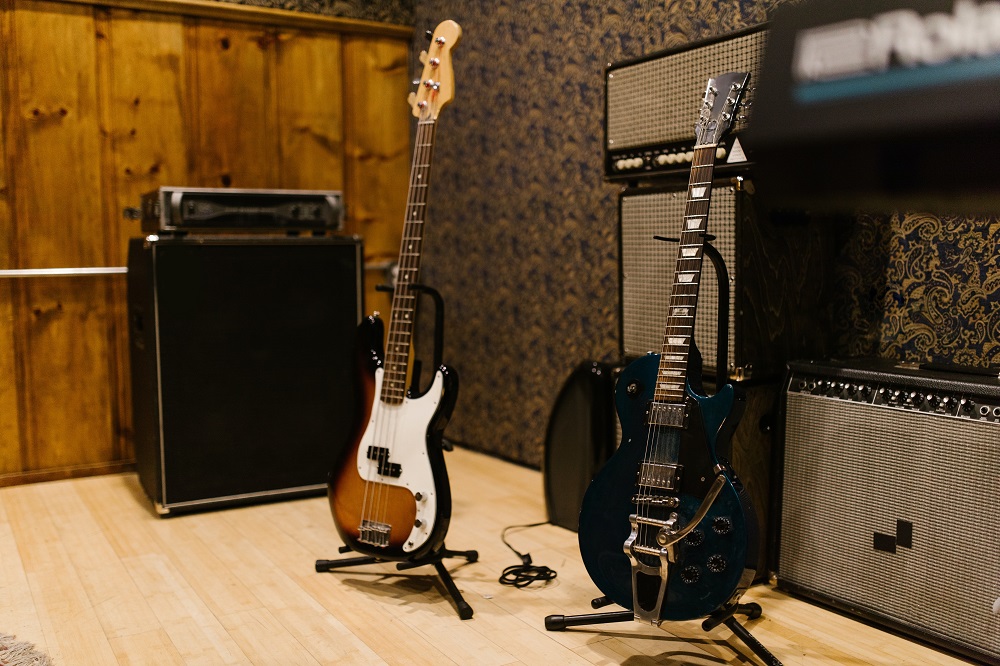
The debate between tube amps and solid-state amps has been a long-standing topic among guitarists. Both types of amplifiers have their devoted followers, each swearing by the superiority of their preferred choice. In this article, we explore the differences between tube amps and solid-state amps, shedding light on their unique characteristics, advantages, and disadvantages. By understanding the distinctions, guitarists can make an informed decision when selecting an amplifier that suits their playing style and tonal preferences.
Tube Amps: Warmth, Dynamics, and Harmonic Richness
Tube amplifiers have a rich heritage dating back to the early days of electric guitars. These amplifiers utilize vacuum tubes to amplify the guitar signal, providing a warm and organic tone that many musicians find captivating. Tube amps are renowned for their responsiveness to touch and dynamics. When pushed hard, they produce natural compression and smooth overdrive, creating a harmonically rich sound that adds depth and character to a guitarist’s playing.
Solid-State Amps: Reliability, Affordability, and Versatility
Solid-state amplifiers, on the other hand, employ transistors and integrated circuits to amplify the guitar signal. They offer a different set of advantages, making them a popular choice for many guitarists. Solid-state amps are known for their reliability and durability, as they lack the delicate components of vacuum tubes that can require frequent replacement. Additionally, solid-state amps are generally more affordable than their tube counterparts, making them an attractive option for beginners or players on a budget. Moreover, solid-state amps often come equipped with a wide range of built-in effects, making them versatile and suitable for various genres and playing styles.
Tonal Differences: Cleans, Overdrives, and Distortions
When it comes to tonal characteristics, tube amps and solid-state amps exhibit distinct qualities that shape a guitarist’s sound. Tube amps are revered for their warm and round cleans, with a smooth breakup as the volume is increased. The natural compression and harmonics produced by tubes contribute to a dynamic and expressive playing experience, particularly when driven into overdrive or distortion. Tube amps excel in delivering lush, full-bodied tones that can range from delicate and bluesy to searing and aggressive.
On the other hand, solid-state amps tend to offer cleaner and more pristine tones at lower volumes. However, they can lack the depth and harmonic complexity of tube amps when pushed into overdrive. Solid-state amps are often favored by guitarists seeking tight, defined distortion for heavy genres such as metal or high-gain rock. They provide a more clinical and precise sound, ideal for players who prioritize clarity and tightness over harmonic richness.
Maintenance and Lifespan
One of the factors that set tube amps apart is their required maintenance and lifespan. Vacuum tubes are delicate components that wear out over time and need periodic replacement, particularly if the amplifier is used extensively. This maintenance requirement can be seen as a disadvantage for some guitarists, as it adds to the overall cost and effort of owning a tube amp. However, many tube amp enthusiasts argue that the tonal rewards outweigh the maintenance requirements.
In contrast, solid-state amps are generally low-maintenance and can withstand significant wear and tear without the need for component replacement. This factor makes them more suitable for gigging musicians or those who prefer a plug-and-play setup without worrying about tube replacements or biasing.
The Role of Technology: Digital Modeling and Hybrid Amps
Advancements in technology have blurred the lines between tube amps and solid-state amps with the introduction of digital modeling and hybrid amplifiers. Digital modeling amps simulate the tonal characteristics of various vintage and modern amplifiers, including tube amp emulations, using advanced software algorithms. These amps offer a vast array of tones and effects, making them a versatile option for guitarists who crave flexibility and experimentation.
Hybrid amplifiers combine the best of both worlds by integrating a tube preamp with a solid-state power amp or vice versa. This design aims to capture the warmth and responsiveness of tubes while providing the reliability and affordability of solid-state technology. Hybrid amps often strike a balance between traditional and modern tones, appealing to guitarists who seek a fusion of classic and contemporary sounds.
The tube vs solid-state debate continues to divide the guitar community, with passionate advocates on both sides. Tube amps offer a warm, organic, and harmonically rich sound, coupled with dynamic responsiveness and natural overdrive. Solid-state amps provide reliability, affordability, and versatility, making them attractive options for beginners and those seeking a more clinical tone. While the tonal differences between the two types of amps are distinct, advancements in technology have bridged the gap with digital modeling and hybrid amplifiers. Ultimately, the choice between tube and solid-state amps boils down to personal preference, playing style, and tonal goals. Experimentation and open-mindedness can lead guitarists to discover the amplification that truly resonates with their musical vision.
Generated by ChatGPT